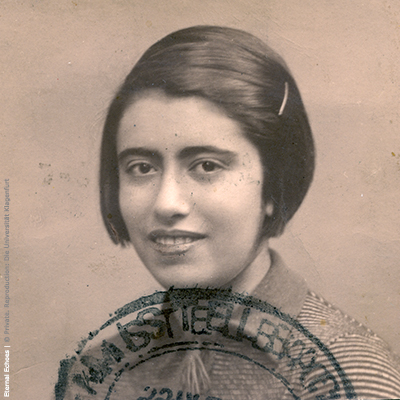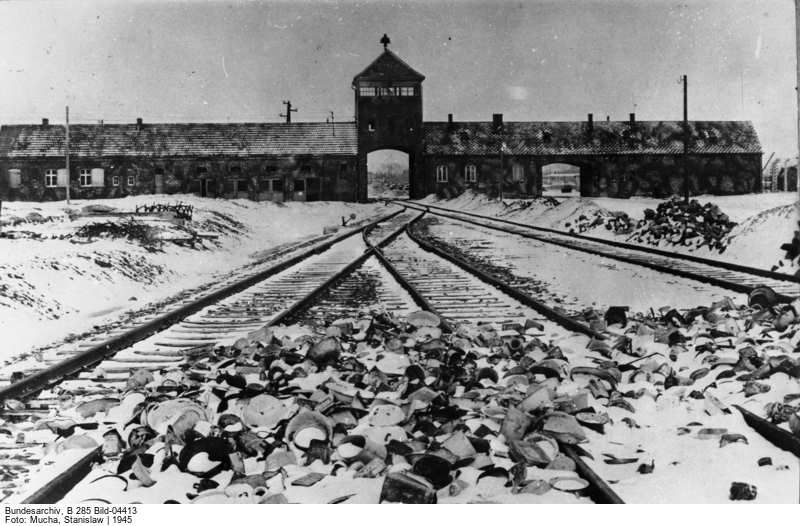I was there.
In August 1944, when the ghetto was liquidated, Grete was deported to the extermination camp Auschwitz-Birkenau. After a few weeks in Auschwitz she was transferred to forced labor in the Krupp Company in Berlin.
After further deportations and a death march to the West, Grete was liberated, together with other women, at the village Vietlübbe in Mecklenburg-Western Pomerania by the arrival of the Soviet Army.

Grete Stern, nee Feldsberg (1920), Austria
Auschwitz
On her arrival in the Auschwitz concentration camp, Grete Feldsberg gave up hope for the first time.
1) Look at the picture and consider the question.
1a. Have you seen this photo before? What do you know about the place?
2) Read the text on Auschwitz-Birkenau concentration camp and compare it with the corresponding texts in your schoolbooks. Answer the question.
2a. Why is it important to continue to learn about it today?
3) Listen to Grete as she talks about the transport from Litzmannstadt ghetto to Auschwitz. Answer the question.
3a. What were her impressions on arrival at Auschwitz?
Forced Labour at Krupp
Grete Stern tells how she was transported from Auschwitz to Berlin and came to forced labour for the German company Krupp.
4) Listen to Grete as she talks about her transfer from Auschwitz to forced labor in Berlin. Answer the questions.
4a. What experience shocked her most on her arrival in Berlin-Neukölln?
5) Grete Stern and her friend Helli Fixel’s recollections differ in small details. The film Aspangbahnhof 1941 (in the extra material) shows the stories of the two women, their personal experience, and their shared suffering.
“It happened, therefore it can happen again: this is the core of what we have to say” (Primo Levi, Auschwitz survivor).
5a. Discuss the meaning of the quote.
 Choose Language
Choose Language  svenska
svenska  română
română  polski
polski  Lithuanian
Lithuanian  Deutsch
Deutsch  magyar
magyar 


